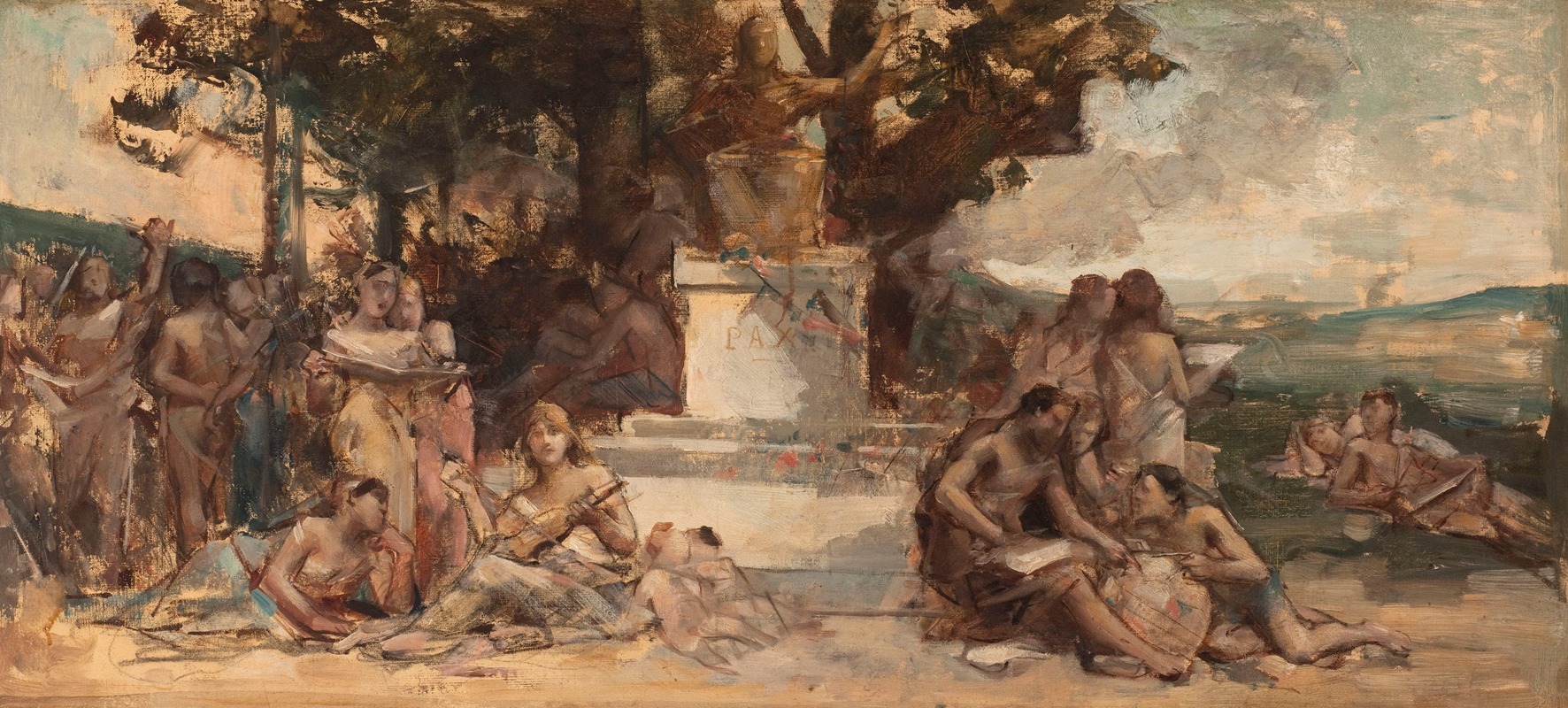
L’étude des sciences et des arts
A hand-painted replica of Léon François Comerre’s masterpiece L’étude des sciences et des arts, meticulously crafted by professional artists to capture the true essence of the original. Each piece is created with museum-quality canvas and rare mineral pigments, carefully painted by experienced artists with delicate brushstrokes and rich, layered colors to perfectly recreate the texture of the original artwork. Unlike machine-printed reproductions, this hand-painted version brings the painting to life, infused with the artist’s emotions and skill in every stroke. Whether for personal collection or home decoration, it instantly elevates the artistic atmosphere of any space.
Léon François Comerre was a French academic painter known for his portraits, genre scenes, and depictions of mythological subjects. Born on October 10, 1850, in Trélon, France, Comerre studied at the École des Beaux-Arts in Lille before moving to Paris, where he continued his education at the École des Beaux-Arts under the tutelage of Alexandre Cabanel, a prominent academic painter of the time.
Comerre's work is characterized by its attention to detail, vibrant use of color, and classical composition. He was a regular exhibitor at the Paris Salon, where he gained recognition and accolades for his paintings. His style is often associated with the academic art movement, which emphasized traditional techniques and subjects, often drawing inspiration from history, mythology, and classical literature.
One of Comerre's notable works is "L’étude des sciences et des arts" (The Study of Sciences and Arts). This painting exemplifies Comerre's skill in combining allegorical themes with a refined aesthetic. Although specific details about the painting's creation and current location are not widely documented, it is representative of Comerre's broader body of work, which often explored themes of knowledge, beauty, and the human experience.
"L’étude des sciences et des arts" likely reflects the 19th-century fascination with the pursuit of knowledge and the celebration of intellectual and artistic achievements. During this period, there was a strong emphasis on the importance of education and the arts as a means of personal and societal advancement. Comerre's painting would have resonated with contemporary audiences who valued the integration of scientific inquiry and artistic expression.
Comerre's ability to capture the elegance and grace of his subjects is evident in his meticulous attention to detail and his use of light and shadow to create depth and dimension. His paintings often feature rich, warm colors and a harmonious balance of composition, drawing the viewer's eye to the central figures and themes.
Throughout his career, Comerre received numerous awards and honors, including the prestigious Prix de Rome in 1875, which allowed him to study in Italy and further develop his artistic skills. His work was well-received both in France and internationally, and he exhibited in various countries, including the United States and England.
Comerre's legacy as an artist is preserved through his contributions to the academic art tradition and his ability to convey complex themes through his paintings. While "L’étude des sciences et des arts" may not be as widely recognized as some of his other works, it remains an important part of his oeuvre, reflecting the intellectual and cultural currents of his time.
In summary, Léon François Comerre's "L’étude des sciences et des arts" is a testament to the artist's mastery of academic painting and his engagement with themes of knowledge and artistic expression. Although specific details about the painting are limited, it stands as a representation of Comerre's broader artistic achievements and his place within the 19th-century art world.


















